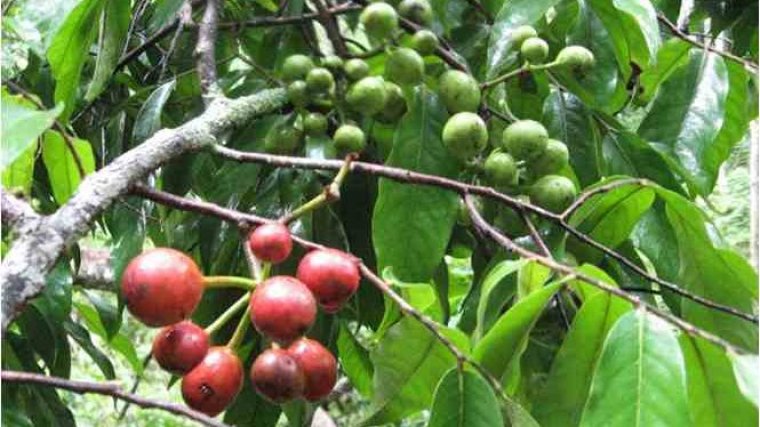| News / Science News |
Overhunting of large animals has catastrophic effects on trees
NSF | NOVEMBER 25, 2014
The elephant has long been an important spiritual, cultural and national symbol in Thailand. At the beginning of the 20th century, its numbers exceeded 100,000. Today, those numbers have plunged to 2,000. Elephants, as well as other large, charismatic animals such as tigers, monkeys and civet cats, are under attack from hunters and poachers.

The cherry-sized fruits of a tree species in Thailand are eaten by large animals, including bears. ![]()
While the loss of these animals is concerning for species conservation, now researchers at the University of Florida have shown that overhunting can have widespread effects on the forest itself. Overhunting leads to the extinction of a dominant tree species, Miliusa horsfieldii, or the Miliusa beech, with likely cascading effects on other forest biota.
The ecologists show how vital large animals are to maintaining the biodiversity of tropical forests in Thailand. The team looked at how these mammals contribute to moving seeds through the forest. Seed dispersers help trees get to new places. The effects of hunting can extend far beyond the hunted, threatening the overall health of the trees that make up the forest.
The scientists looked at the growth and survival of trees that sprouted from parent trees and grew up in crowded environs, compared to trees from seeds that were widely transported across the forest by animals.
The scientists discovered that trees that grow from seeds transported by now-overhunted animals are hardier and healthier. The results show that loss of animal seed-dispersers increases the probability of tree extinction by more than tenfold over a 100-year period.
YOU MAY ALSO LIKE




